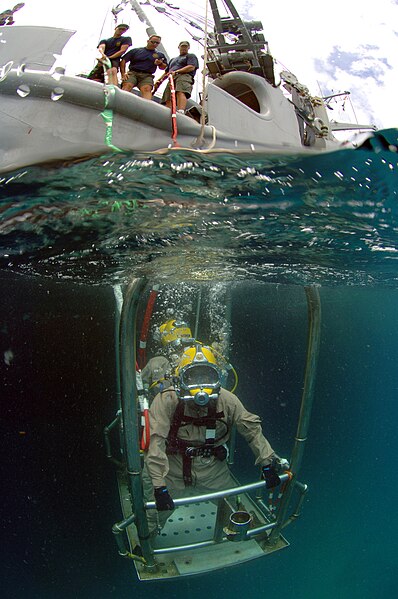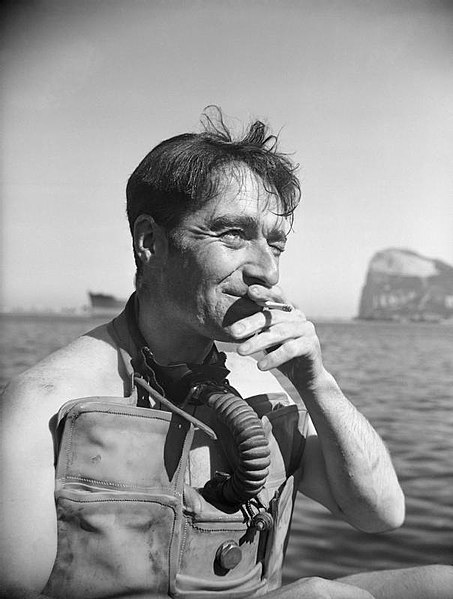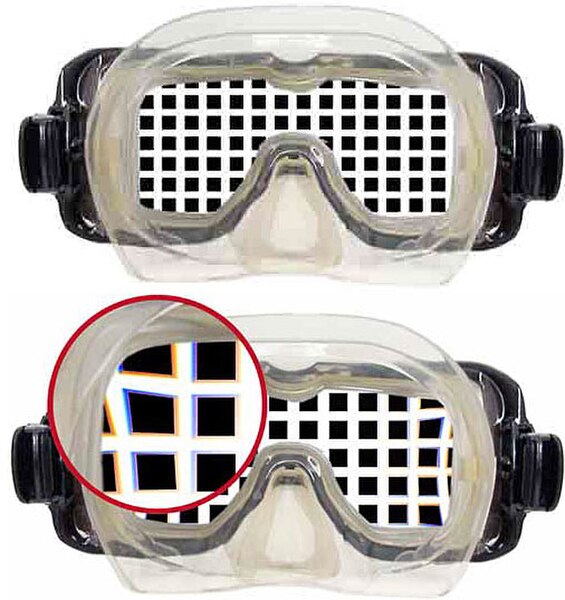A clearance diver was originally a specialist naval diver who used explosives underwater to remove obstructions to make harbours and shipping channels safe to navigate, but the term "clearance diver" was later used to include other naval underwater work. Units of clearance divers were first formed during and after World War II to clear ports and harbours in the Mediterranean and Northern Europe of unexploded ordnance and shipwrecks and booby traps laid by the Germans.
A US Navy work diver is lowered to the sea bed during a dive from the USNS Grasp (T-ARS-51) off the coast of St. Kitts.
Preparing to raise a mine from the seabed
US Navy explosive ordnance disposal (EOD) divers
Lionel 'Buster' Crabb, using the DSEA at Gibraltar, April 1944.
Underwater diving, as a human activity, is the practice of descending below the water's surface to interact with the environment. It is also often referred to as diving, an ambiguous term with several possible meanings, depending on context.
Immersion in water and exposure to high ambient pressure have physiological effects that limit the depths and duration possible in ambient pressure diving. Humans are not physiologically and anatomically well-adapted to the environmental conditions of diving, and various equipment has been developed to extend the depth and duration of human dives, and allow different types of work to be done.
Surface-supplied divers riding a stage to the underwater workplace
Mild barotrauma to a diver caused by mask squeeze
Views through a flat mask, above and below water
Recreational breath-hold divers in basic equipment with floats and catch bags suitable for collecting lobster or shellfish







